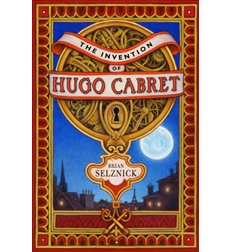What A Glorious Thing the Turning of a Page Can Be
 Yesterday I stated my first hallmark of the comics form as opposed to the picture-book form: more pictures on each page. Of course, a preschooler could see that. Is that insight really a good use of a college degree and twenty years of editing books?
Yesterday I stated my first hallmark of the comics form as opposed to the picture-book form: more pictures on each page. Of course, a preschooler could see that. Is that insight really a good use of a college degree and twenty years of editing books?
No, but I think the implications of that basic fact send comics and picture books on somewhat different paths up the storytelling mountain. As I wrote yesterday, most comics appear to be organized in units of pages while most picture books are conceived in terms of page spreads. And today I'll posit another way the two forms work differently because of the different image-per-page ratios.
In comics, the vast majority of transitions from one image to the next occur through readers simply moving their eyes across the page spread. Both pictures remain visible. There's no other physical action necessary, and the time is quick.
In contrast, in picture books the vast majority of transitions from one image to the next take place through a page turn. One picture replaces another. There's a physical action, and a slight transition time.
The page turn has thus become a dominant element in how picture-book creators plan their pacing, suspense, surprises, scene changes, mood shifts, and more. In his interview on the National Book Award website after The Invention of Hugo Cabret was nominated for that award, Brian Selznick said: There are graphic novels of course, but these don't usually take full advantage of the idea of the page turn. What a glorious thing the turning of a page can be!
Selznick's quotation shows the importance that picture-book artists give to the page turn. As I wrote about Hugo Cabret, its visual scheme depends entirely on page turns: there are never two pictures side by side.
Other remarks on the importance of the page turn in picture books:
In essence, most picture books take the fuel that drives readers through every story--the wish to know what happens next--and inject it into page turns. That said, Selznick is wrong to suggest that page turns don't play a big role in graphic novels. A very traditional comics volume I read earlier in the week--the superhero brawl The Insiders--has many dramatic page turns. In fact, the trope becomes rather predictable: you turn the page and find a big panel of a villain or two looming in the sky, energy crackling out of their eyes.
That said, Selznick is wrong to suggest that page turns don't play a big role in graphic novels. A very traditional comics volume I read earlier in the week--the superhero brawl The Insiders--has many dramatic page turns. In fact, the trope becomes rather predictable: you turn the page and find a big panel of a villain or two looming in the sky, energy crackling out of their eyes.
Both picture books and today's comic books seem to put particular weight on the final page turn, though in different ways. In picture books, that final step brings the story to a close, as in Where the Wild Things Are: the last page is simply text that says, "And it was still hot." Today's comic periodicals depend on interlacing, never-ending stories and multi-issue "arcs," so a final page often leads into a dire new conflict or emergency, cuing readers to buy the next issue.
The reason Selznick might perceive graphic novels as not taking full advantage of the power of page turns is that that type of transition isn't the primary mover of comics. In comics the most common transition between sequential images is perforce the eyeball shift from one panel to its neighbor. That doesn't require as much time and effort from the reader, and therefore seems less dramatic. (But tomorrow I'll discuss how that transition allows some visual techniques that picture books use more rarely.)
Visual storytellers might have to make a choice between a single image on most page spreads and lots of images, without much middle ground. My writing-group colleague Marilyn Salerno is also a first-grade teacher, and thus experienced in sharing picture books for beginning readers. She says that when she shows her classes books with two or three images on a page spread, the kids' eyes go zzzzzip! across the images to the one on the right. (Presumably the opposite occurs in Japan, Israel, and other countries that read right to left.) These young readers are all interested in the latest event, not in chewing on what came just before.
Why don't we zzzzzip the same way to the lower right of a comics page? I think a coupla things slow us down:
Those two elements of comics remind us of how much information we'd miss by skipping to the last image. Comics readers learn to be more patient than a first-grader.
TOMORROW: Picture books, comics, and visual variety.


No comments:
Post a Comment